Sequencers, Synths, and Terrible Tattoos: 16 Things That Caught Our Eye at NAMM 2015
A wrap-up of the best (and weirdest) things on offer at the annual gear convention.

Sequencers, Synths, and Terrible Tattoos: 16 Things That Caught Our Eye at NAMM 2015
A wrap-up of the best (and weirdest) things on offer at the annual gear convention.

If someone were to simply read the list of big hitters on display at this year’s NAMM show without any additional context, they might be left wondering exactly what year we were living in. After all, the 2015 edition of the massive conference and exhibition—which sets up shop in Orange County every January and provides a platform for music-related gear and software companies to show off their new products—was essentially dominated by nostalgia-inducing throwbacks. Korg’s Arp Odyssey and Moog’s full-size System 55 were just a couple of the retro pieces making waves, but thankfully, there was plenty more on offer for DJs and electronic music producers to get excited about. Describing everything we saw while wandering the halls of the Anaheim Convention Center would be impossible, but we have compiled a list of things—good, bad, and outright weird—that caught our eye.
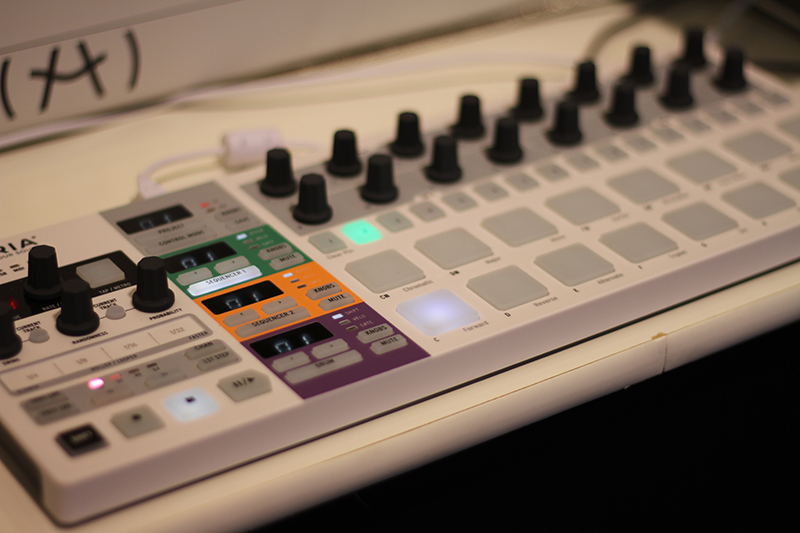
Arturia BeatStep Pro
Released last year, Arturia‘s $99 BeatStep USB MIDI controller serves as a simple, handy-as-heck hardware step sequencer, particularly with its CV and MIDI outputs. BeatStep Pro ups the game significantly by combining two melodic sequencers with one drum sequencer and allowing the user run them independently. Changes to the sequences can be linked, or independent of one another, and displays help with navigation and precision. There are now touch-sensitive knobs, plus a Randomizer to mix up patterns, and a real-time looper/roller touch strip. Priced at $299, the BeatStep Pro is slated to arrive in April.
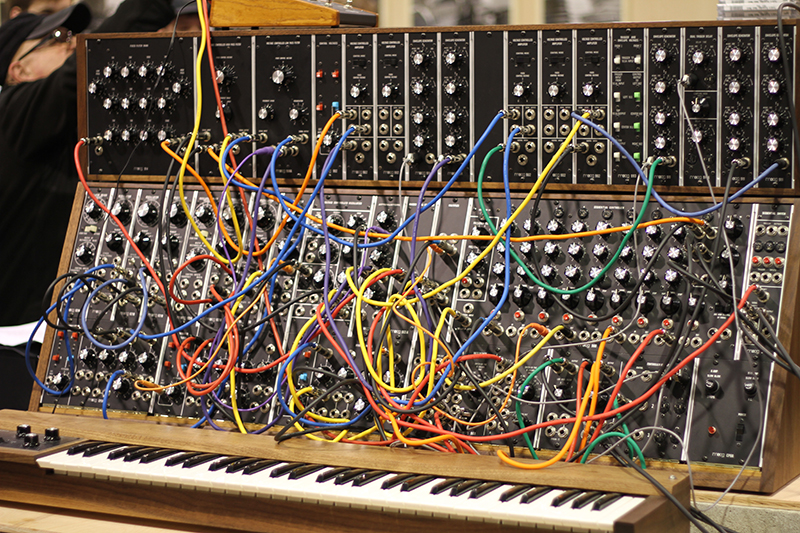
Moog Modular Synths
This news has already been all over the web, but Moog was showing the limited-edition remakes of its 1970s modular beasts: the System 35, System 55, and Model 15. Only 55 units of the System 55 will be offered, and each one will cost $35,000; Moog will also make 35 copies of the System 35, for $22,000 a pop, and 150 of the Model 15, each one priced at $10,000. Some optional extras are also being built to go along with these modular classics: a five-octave duophonic keyboard, a sequencer extension cabinet, and a dual 960 Sequential Controller for the System 35 and System 55.
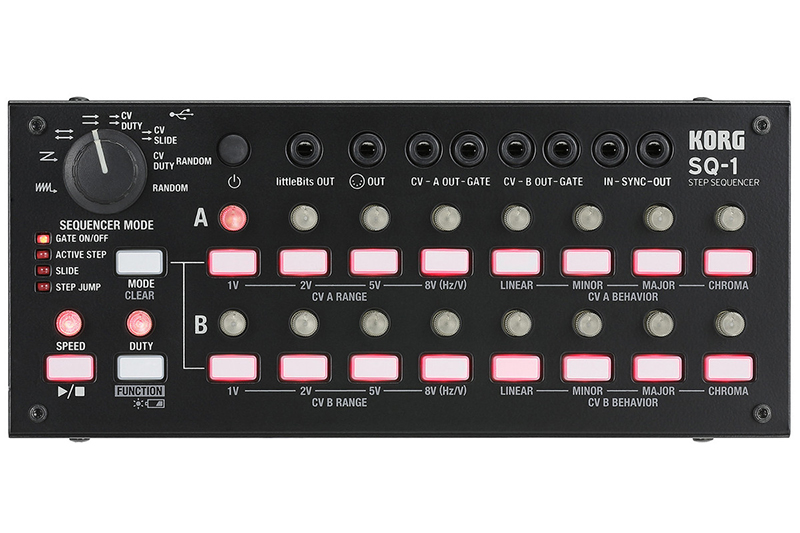
Korg SQ-1
The SQ-1, Korg‘s new, super-compact step sequencer, is a spiritual successor to the SQ-10 that’s roughly the size of a Korg Volca. It’ll keep synths and drum machines in sync by sending clock, and also allows users to make various rhythmic or melodic patterns to send to them. Even better, it should connect to almost anything: with dual CV trigger and gate, analog 1/8″ sync, a specific connection for Korg’s own littleBits, a three-pin MIDI connection, and a USB port for MIDI connection to a computer, the proof is in the portage. The SQ-1 will be priced at $99 when it ships in the coming months.
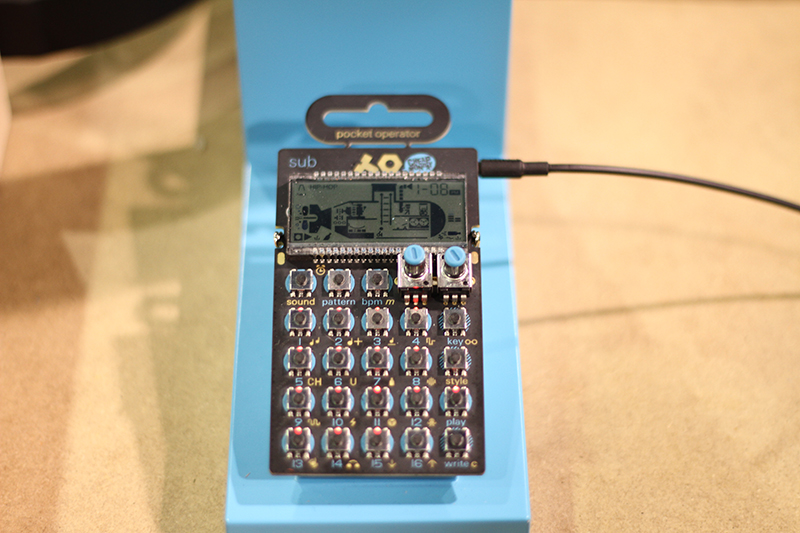
Teenage Engineering Pocket Operators
Some of the biggest news out of this year’s NAMM came in its smallest packages: Teenage Engineering‘s trio of Pocket Operators, which include the Factory melodic synth, Sub bass synth, and Rhythm drum machine. Each one uses a 16-step grid of 16 sounds (with layers of parameters for each), and the synthesized output sounds outrageously good. There’s a second minijack that allows users to chain and synchronize tempo between units, as well as some other machines. All three models have various effects and tweakable parameters. Plus, they look great, whether they’re in the nude or placed inside the optional rubberized case. The Pocket Operators are all available now for $59 a piece.
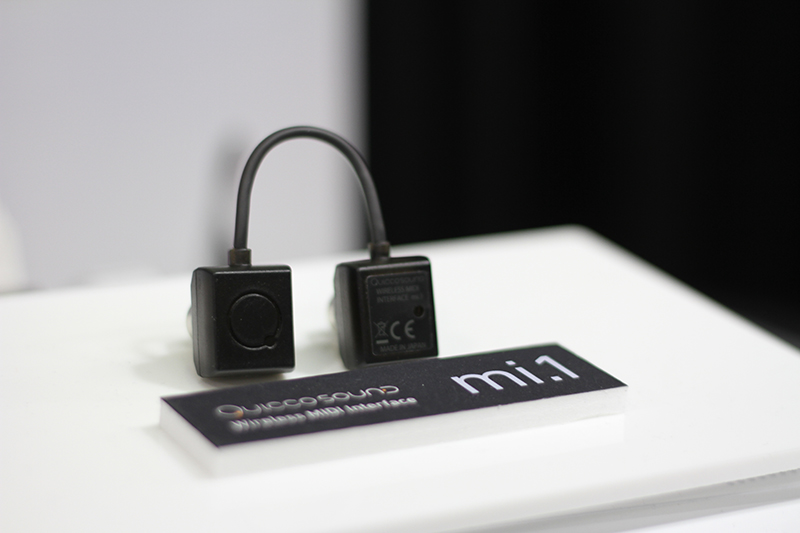
Quicco Sound Mi.1
Merging analog hardware with digital software can be difficult, but the Quicco Sound Mi.1 (which was funded via Indiegogo) does it—effortlessly and wirelessly. The tiny device can simply be plugged into the MIDI in and out ports of a synth (or any other MIDI instrument), and it will make said device wireless over Bluetooth LE. Once an iOS device or Mac is fired up with an app that can make the other end of the Bluetooth connection, the user is good to go. There are dozens of great iPad sequencers and arpeggiators out there, meaning that the Mi.1 provides loads of cool new ways to control hardware, wirelessly. It’s shipping now for $45.
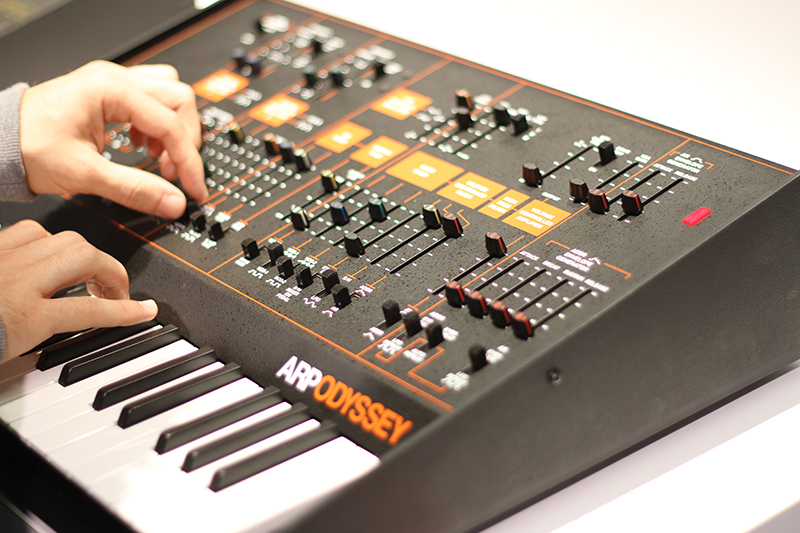
Korg Arp Odyssey
Another remake from Japanese legend Korg, the Arp Odyssey is being designed with authentic Arp circuitry. The original Arp shipped with different filters at different times, but Korg is now allowing customers to choose, as circuits from each generation are being included. The case has been trimmed down, as the new Odyssey is just 86% of the size of the original, and it’s being sold in three different colorways. There’s even a Drive switch for analog overdrive distortion. Availability is TBA, but an MSRP of $1400 has been announced.
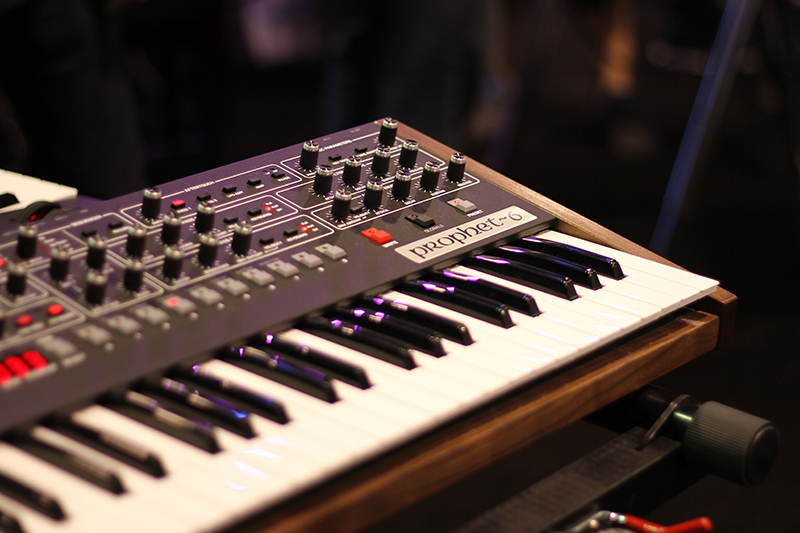
Dave Smith Sequential Circuits Prophet-6
The Prophet-6 is Dave Smith‘s homage to the legendary polysynth that started it all, the Sequential Prophet-5. The Prophet-6 takes the best qualities of the original Prophet-5—true voltage-controlled oscillators, filters, and amplifiers—and adds enhancements, including high-quality effects, a polyphonic step sequencer, an arpeggiator, and much more. The Prophet-6 will be out in the second quarter of 2015 for $2799.
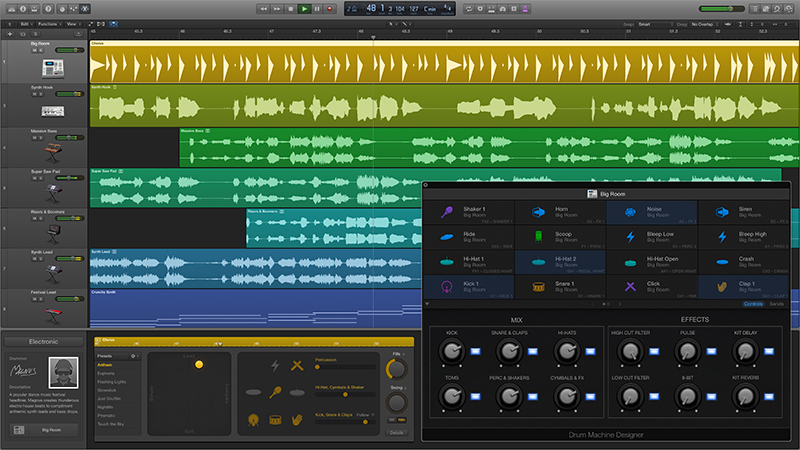
Logic Pro X 10.1
The latest wave of interest in electronic music has not escaped Apple’s notice, and Logic Pro X 10.1 is the company’s answer to the craze. The free update is aimed at the electronic music producer, with 10 new “beat programmers” added to its AI-driven Drummer feature. As with the acoustic players, users can direct the program to play different patterns based on the position of the XY slider, and further customize once they find something they’re happy with. The new Drum Machine Designer makes it so each individual drum sound can be tweaked, as pitch, length, envelope, distortion, body, presence, pan, and volume can all be adjusted. Furthermore, Logic now offers new Note Repeat and Spot Erase features—and plenty more. The software’s latest version is available now.
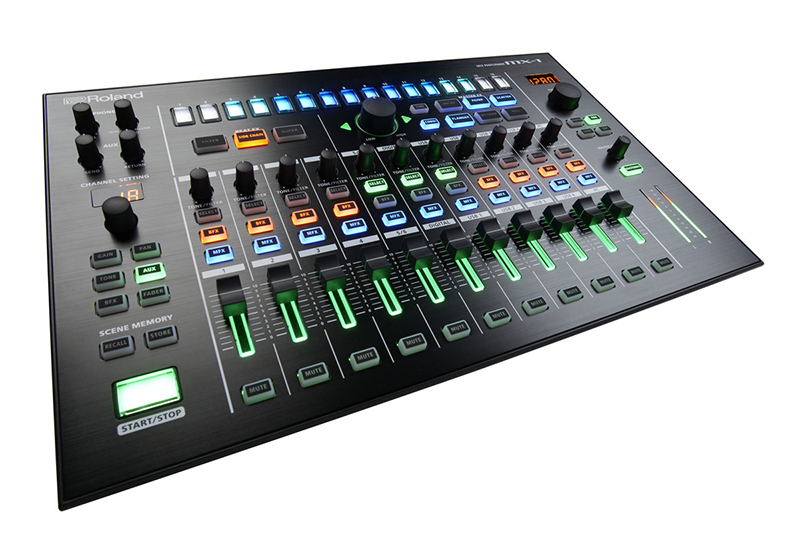
Roland Aira MX-1
Following the release of the AIRA TR-8 and SYSTEM-1, the MX-1 is Roland‘s attempt to rethink the mixer. It functions as an audio interface for a computer (up to 18 channels of audio come via USB), and users can plug in Roland AIRA devices via USB as well, over the same USB cable. There are traditional analog inputs for other hardware, and a single coax digital jack that’s either an input or output. The mixer is designed for live use: scenes can be set up, and there are loads of tempo-synced step-sequencer effects, along with a cue feature for previewing a track before taking it to the masses. Pricing and availability on this one are TBA.
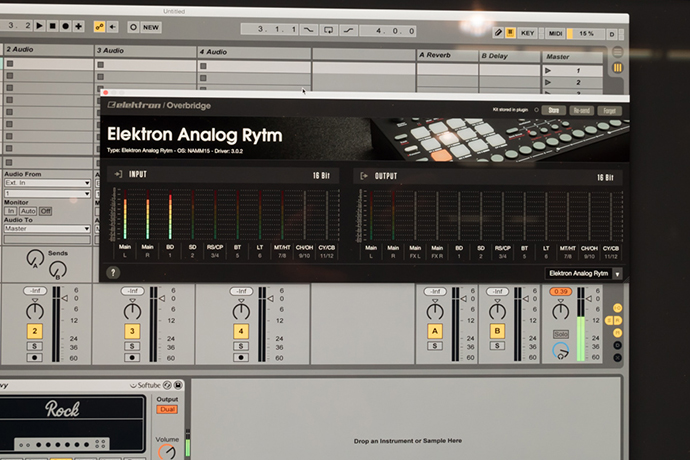
Elektron Overbridge
Elektron‘s Overbridge was announced last year, and was finally up and running at this year’s NAMM. It’s a technology that allows newer Elektron instruments—Analog Four, Analog Rytm, and Analog Keys—to transmit their audio and MIDI over USB, into a host plug-in that will run inside a host DAW (Ableton Live and Logic, for now). Users can route discrete inputs and outputs, as well as MIDI, and the ability to automate the machines’ parameters inside a sequencer is a godsend in terms of usability. It’ll be free to all users when it’s released in the first quarter of 2015.
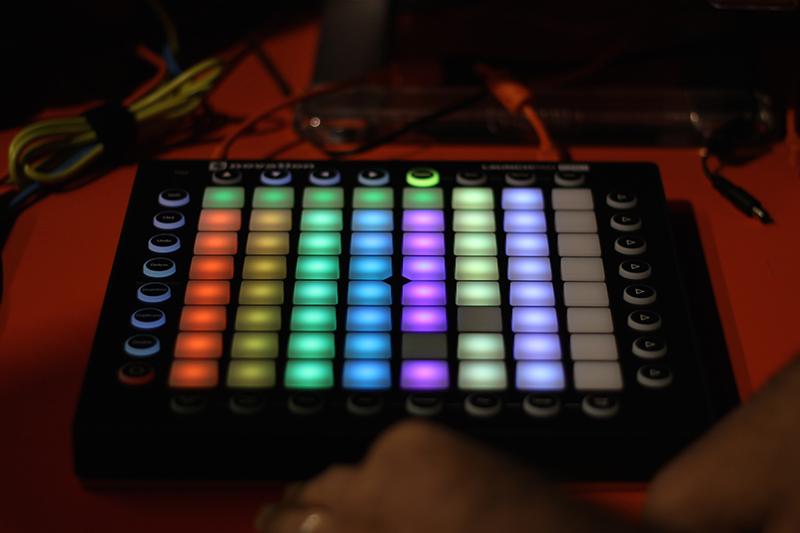
Novation Launchpad Pro
Designed for live performance, Novation‘s Launchpad Pro is the most desirable model to date of the ubiquitous grid controller. New RGB pads light up to match the color of the user’s clips in Ableton Live, and its Push-like Note Mode automatically switches the layout for drum or instrument devices (for drums, all sounds are available, and with instruments, the grid illuminates as a chromatic keyboard). Unlike Push, the Launchpad Pro can also be used with any of the user’s music software and external hardware in Standalone Mode. It will be available in Spring 2015 for $299.
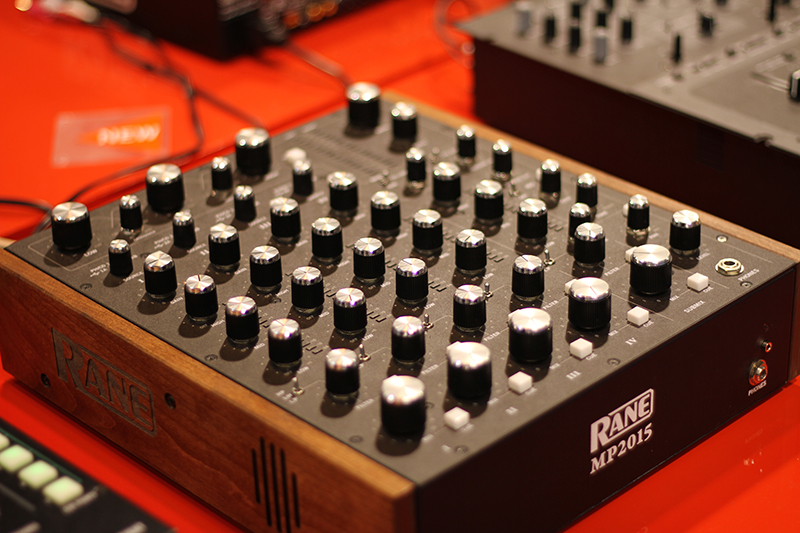
Rane MP2015
Rane is describing its new MP2015 rotary mixer as a “no-compromise music-mixing performance instrument,” and at a price of $3,500, that only seems fair. It features gorgeous design, including laser-etched wood side panels, classic spun-aluminum knob caps, 16-segment level peak-hold meters, and backlit push switches. The internals are similarly lust-worthy, with Audio 4 Pro delta-sigma modulator converters by AKM.
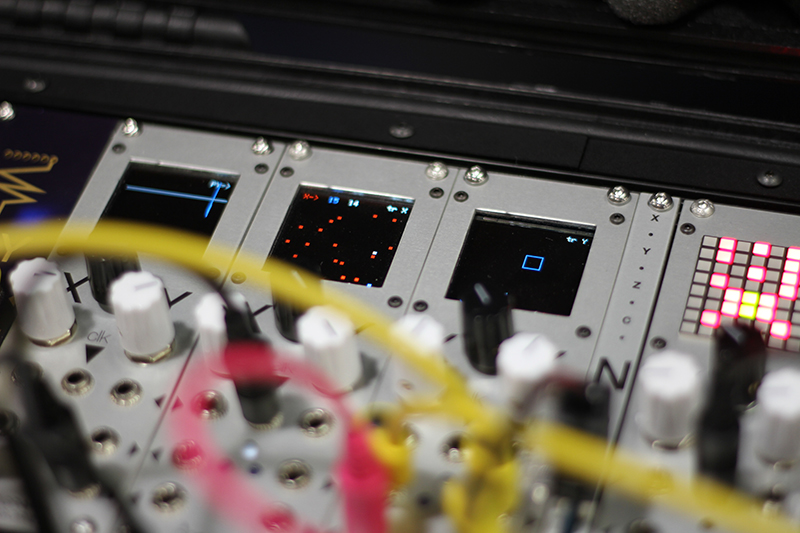
Downstairs Modular
NAMM’s basement was once again populated by various small stringed instruments, obscure Chinese gear manufacturers, and a turnt-as-hell modular synthesizer community. Highlights included booths by big hitters like Make Noise and Muff Wiggler, as well as newcomers like Lysandre Follet (a.k.a. Minigorille) whose CV Graphic Module and GeometrySynth (pictured here) continue to push the boundaries of what modern-day modular synthesizers are capable of.
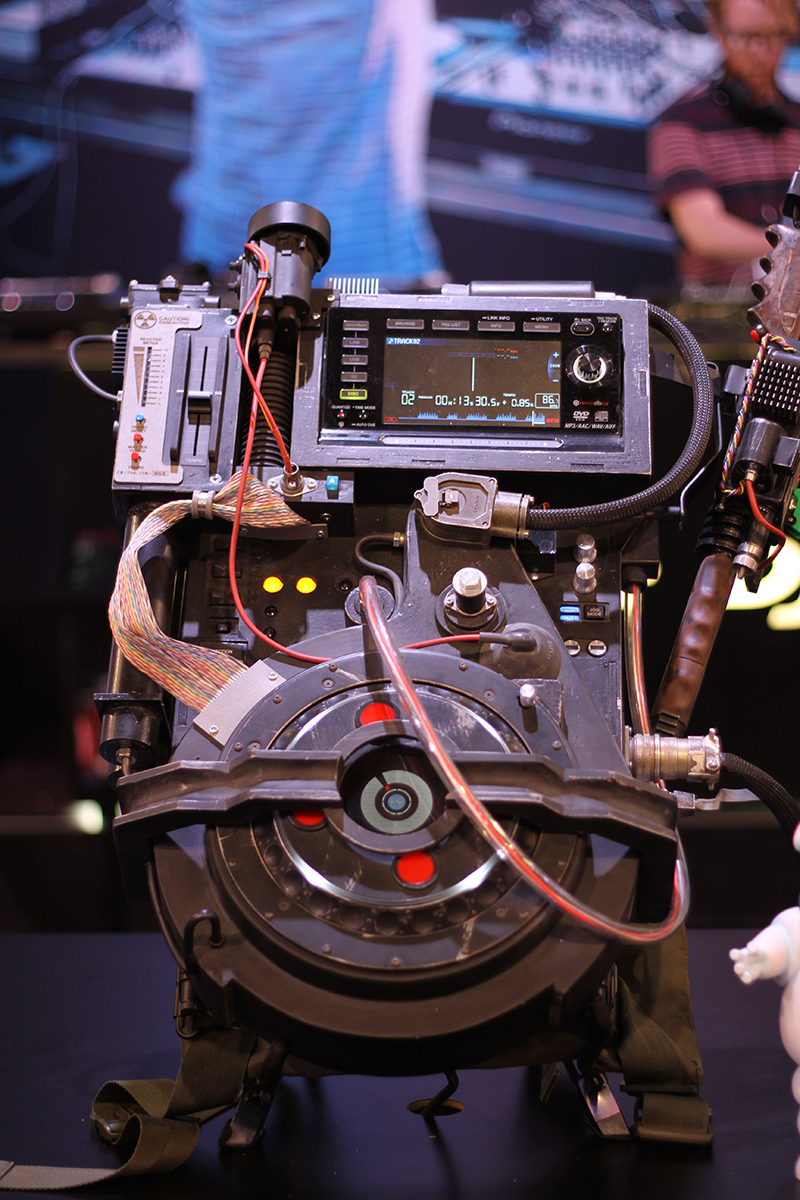
Pioneer vs. Ghostbusters
Pioneer never fails to impress with its flights of turntable fancy. This (working) Ghostbusters CDJ was designed by artist Jesse Graves.

God Hates Gear Nerds
Apparently?

Hollywood Gordon
Because NAMM.

